Unit 4: Cell Communication and Cell Cycle
1/53
There's no tags or description
Looks like no tags are added yet.
Name | Mastery | Learn | Test | Matching | Spaced |
|---|
No study sessions yet.
54 Terms
Homeostasis
Steady state or internal balance

When do cells maintain homeostasis?
Maintain a relatively constant internal environment even when the external environment changes significantly
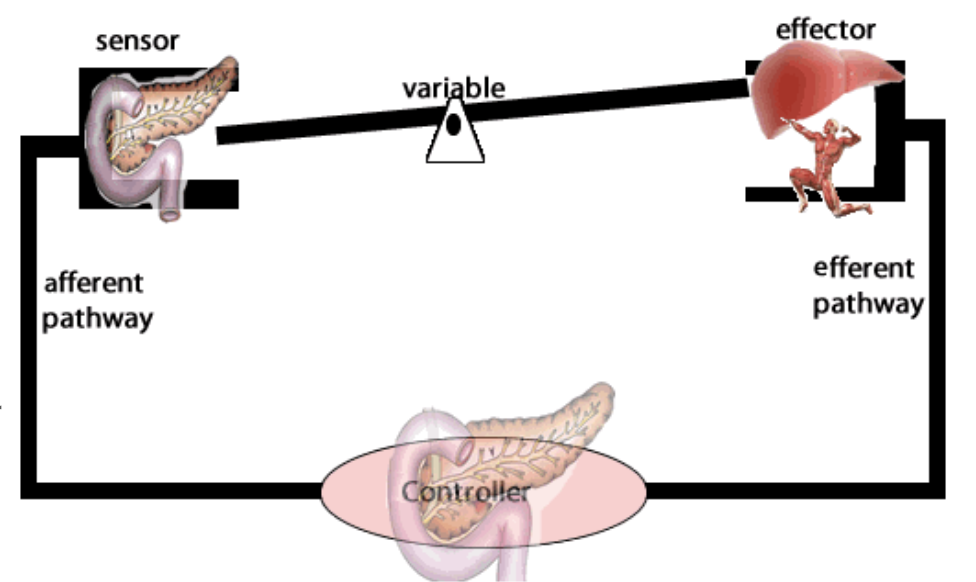
Set point
Internal conditions typical state
Stimulus
Fluctuations in that condition above or below the set point serve
Sensor
A receptor or sensor detects the stimulus and triggers a response
Response
Activity that returns the condition to the set point
Negative Feedback
Response reduces the stimulus
Example of negative feedback
When you exercise, you produce heat, which increases your body temperature.
Your nervous system detects this increases and triggers sweating. As your sweat evaporates, your skin cools, returning your body to its set point.
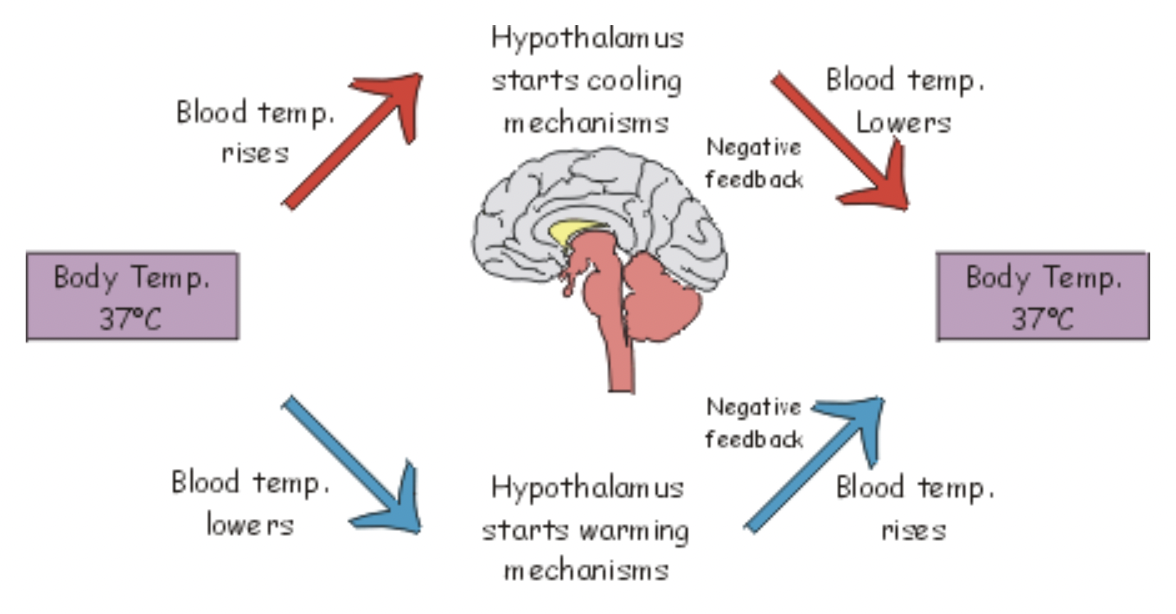
Positive Feedback
Stimulus is amplified in order to complete a process; then the condition returns to the set point
Example of positive feedback
During childbirth, the pressure of the baby’s head against the uterus stimulates contractions.
The contractions result in greater pressure, thereby stimulating more contractions and then more pressure. This continues until the baby is born.
Methods Used by Cells to Communicate
Autocrine, Juxtacrine, Paracrine, Endocrine
Autocrine signaling
A cell sends a signal to itself
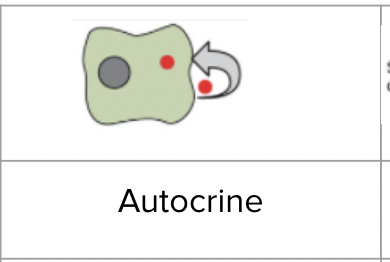
Juxtacrine signaling
Cells communicate with adjacent cells through direct contact
Paracrine signaling - cells communicate to nearby cells by releasing chemical messengers
Ex. neurotransmitters released into a synapse
Endocrine signaling - cells communicate to cells far away by releasing chemical messengers that are carried to the target cell
Ex. adrenaline is produced by adrenal glands, released into the bloodstream, and carried to the heart and other muscles

Two examples of juxtacrine signalling
Ex. plasmodesmata connect plant cells and gap junctions connect animal cells
Ex. glycoproteins on one cell interact with glycoproteins on another cell
Paracrine signalling
Cells communicate to nearby cells by releasing chemical messengers
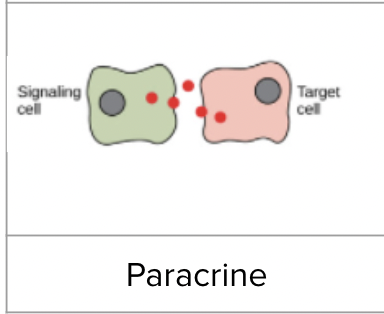
Paracrine signalling example
Ex. neurotransmitters released into a synapse
Endocrine signalling
Cells communicate to cells far away by releasing chemical messengers that are carried to the target cell
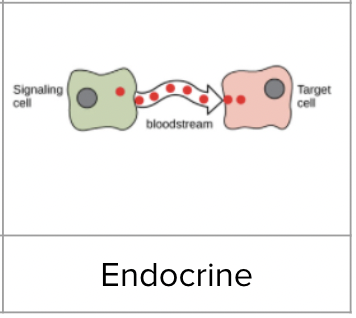
Endocrine signalling example
Adrenaline is produced by adrenal glands, released into the bloodstream, and carried to the heart and other muscles
In all forms of cell signaling, a signal is converted to a cellular response in three steps:
Reception
Transduction
Response
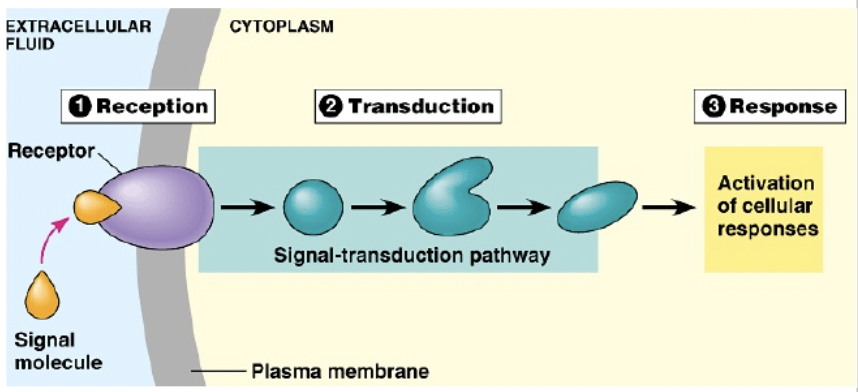
Reception
Signaling molecule binds to the receptor protein
Transduction
The signal is converted into a form that can produce a cellular response
Response
The transduced signal triggers a cellular response
Reception process
A signal molecule, a ligand, binds to a receptor protein in a lock and key fashion, causing the receptor to change shape.
Where are receptor proteins found?
Most receptor proteins are in the cell membrane but some are inside the cell.
Locations of hydrophilic and hydrophobic ligands
Hydrophilic ligands bind to plasma membrane receptors
Small or hydrophobic ligands can pass through the membrane and attach to intracellular receptors (ex. steroid hormones like testosterone)
The three most common types of membrane receptor proteins:
G-protein coupled receptors
Receptor tyrosine kinases
Ion channel receptors
The binding of ligands is how specific?
Highly specific (must be the right shape).
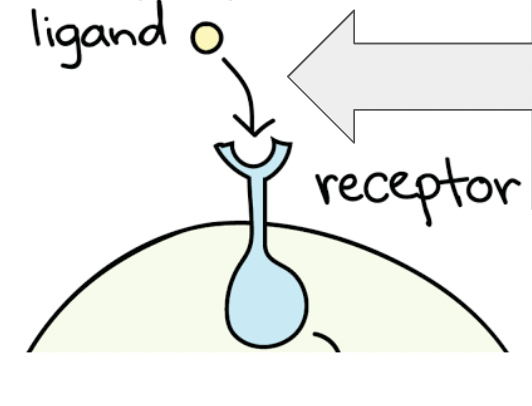
G-Protein Coupled Receptors
G proteins bind the energy-rich GTP (very similar to ATP- source of energy)